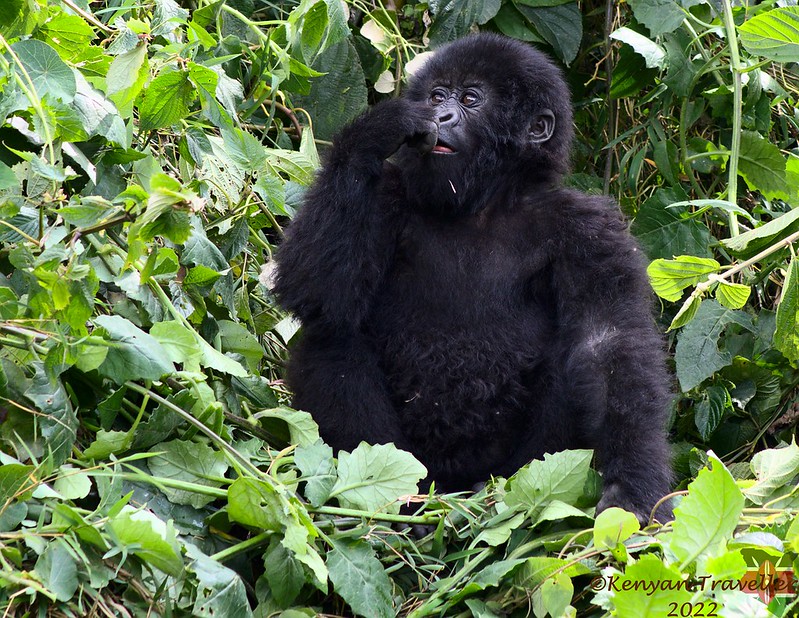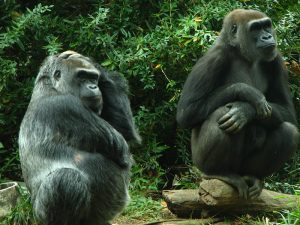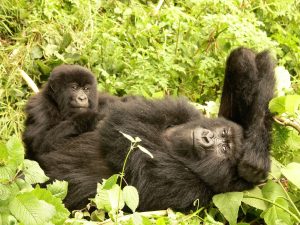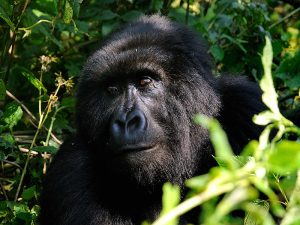Facts about Eastern lowland gorillas.
Step into the captivating realm of the Eastern Lowland Gorillas, where the lush landscapes of Central Africa conceal one of the most remarkable and elusive primate species. As your trusted guide to the wild, Abunda Discoveries Uganda invites you on a journey of discovery, unraveling the fascinating facts that define the Eastern Lowland Gorillas and their existence in the heart of Africa.
Indigenous Habitat: The Verdant Canopy of the Congo Basin:
The Eastern Lowland Gorillas, scientifically known as Gorilla beringei graueri, call the dense rainforests of the Congo Basin home. These giants thrive in the eastern part of the Democratic Republic of Congo, immersed in the rich biodiversity of their native habitat.
Physical Characteristics: Mighty and Majestic:
With males weighing up to 400 pounds and possessing robust builds, Eastern Lowland Gorillas are the largest of the four-gorilla subspecies. Their dense black fur, broad chests, and powerful limbs paint a portrait of strength and resilience.
Social Structure: The Importance of Family Ties:
Eastern Lowland Gorillas exhibit a complex social structure centered around close-knit family units. Led by a dominant silverback—the mature male—the family includes females, infants, and juveniles. This cohesive structure fosters cooperation, protection, and the passing down of generational knowledge.
Diet and Foraging Habits: Vegetarian Connoisseurs of the Forest:
Eastern Lowland Gorillas are predominantly herbivores, feasting on a diet that includes fruits, leaves, stems, and occasionally insects. Their powerful jaws and teeth are adapted for efficiently processing a variety of plant matter found within their rainforest abode.
Unique Fingerprints: Individuality in Nature:
Much like humans, Eastern Lowland Gorillas have unique fingerprints. The distinct patterns on the tips of their fingers serve as a biological signature, highlighting the individuality of each gorilla within a group.
Endangered Status: Facing Threats to Survival:
Despite their resilience, Eastern Lowland Gorillas are classified as endangered. Threats such as habitat loss, poaching, and civil unrest in their native regions pose significant challenges to their survival. Conservation efforts are critical to ensuring the future of these majestic creatures.
Conservation Initiatives: Safeguarding the Giants of the Congo:
Abunda Discoveries Uganda recognizes the importance of conservation initiatives for Eastern Lowland Gorillas. Through partnerships with local communities, awareness campaigns, and responsible tourism practices, the aim is to contribute to the preservation of their natural habitats.
Communication and Vocalizations: The Language of the Forest:
Eastern Lowland Gorillas communicate through a variety of vocalizations, including grunts, hoots, and barks. These sounds play a crucial role in maintaining social bonds, signaling danger, and expressing emotions within the family unit.
Importance in Ecosystems: Guardians of Biodiversity:
As key players in the ecosystems of the Congo Basin, Eastern Lowland Gorillas contribute to seed dispersal, promoting plant diversity. Their presence also supports the delicate balance of the rainforest, making them essential guardians of biodiversity.
Responsible Encounters: Ethical Wildlife Tourism:
Abunda Discoveries Uganda encourages responsible encounters with Eastern Lowland Gorillas, emphasizing ethical wildlife tourism practices. Guided tours and adherence to conservation guidelines allow visitors to appreciate these incredible creatures while minimizing disturbance to their natural behaviors.
Conclusion:
A Symphony of Survival in the Congo’s Heart:
Eastern Lowland Gorillas are not merely inhabitants of the rainforest; they are guardians of a delicate symphony of life within the Congo Basin. Abunda Discoveries Uganda invites you to join in the efforts to safeguard these enigmatic giants, ensuring that their presence continues to resonate through the verdant canopies of Central Africa for generations to come.




